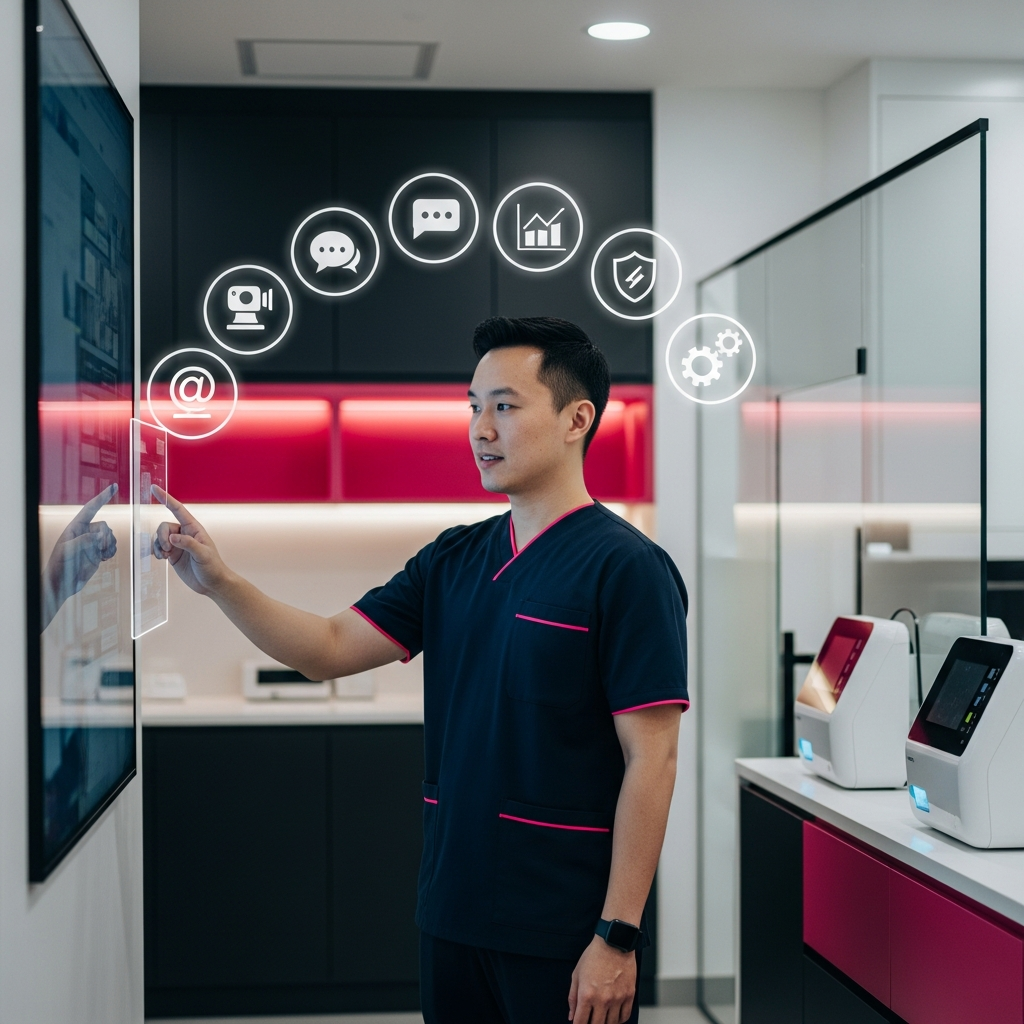
You’ve got a website. It looks professional enough. But here’s the frustrating reality — it’s not bringing in new patients like you hoped it would.
Sound familiar? You’re not alone. From our experience working with over 70 clinics across the country, we see this pattern constantly. Clinic owners invest in a website, launch it with high hopes, then watch as months pass with barely a trickle of online inquiries.
Here’s what’s actually happening: 70% of locals now search online before choosing a healthcare provider. That’s a massive opportunity sitting right in front of you. But if your clinic website design doesn’t convert those visitors into booked appointments, you’re essentially paying rent on digital real estate that generates no income.
By the end of this post, you’ll understand exactly why your current website isn’t working — and the four specific changes that can transform it into a patient-attracting machine that works even when your clinic is closed.
Let’s start with a hard truth about clinic website design: visitors decide whether to stay or leave your site in less than 5 seconds.
Think about your own browsing behavior. When you land on a website, you immediately scan for answers to three questions: Who are these people? Can they help me? How do I get started?
Most clinic websites fail this test spectacularly. We’ve audited hundreds of clinic sites, and here’s what we consistently find:
Generic headlines like “Welcome to ABC Clinic” that say nothing about what you actually do. Vague descriptions that could apply to any medical practice. Contact information buried at the bottom of long, rambling pages.
Here’s what actually works for clinics wanting to show up on Google and convert visitors: Your homepage should immediately communicate who you help, what services you provide, and how to book an appointment.
For example, instead of “Welcome to Sunshine Medical Centre,” try “Family Medicine & Specialist Care in Petaling Jaya — Same-Day Appointments Available.” See the difference? The second version tells visitors exactly what you offer and where you’re located, plus addresses a common concern (appointment availability).
Your value proposition should be crystal clear within the first screen of your website. No scrolling required.
Here’s something that might surprise you: the photos on your clinic website matter more for patient conversion than almost any other design element.
We’ve tested this extensively across our client base. Clinics using authentic photos of their actual team, facilities, and patients consistently see higher inquiry rates than those relying on generic stock images.
Why? Because healthcare is deeply personal. Patients want to see who they’ll be trusting with their health. They want to know your clinic is real, established, and welcoming.
When someone lands on your site and sees the same stock photo of a smiling doctor that they’ve seen on ten other clinic websites, it creates doubt. Are you even a real clinic? Do you care enough about your practice to show your actual team?
The most effective clinic website design includes these visual trust signals:
Photos of your actual doctors and staff (professional headshots work great). Images of your waiting area, consultation rooms, and equipment. Patient testimonials with real names and photos (with permission, of course).
One of our clients, a dental clinic in Subang Jaya, saw a 40% increase in appointment bookings after replacing their stock photos with authentic images of their clinic and team. The investment in professional photography paid for itself within two months.
Don’t underestimate the power of showing your human side. Patients choose healthcare providers they trust, and trust begins with transparency.
Let’s talk about something crucial that most clinic owners overlook: on-page SEO for your website.
You might think SEO is just about getting found on Google. But here’s the thing — proper SEO for doctors actually improves the entire patient experience on your website while making you more visible to people actively searching for your services.
The key is understanding search intent. When someone types “pediatrician near me” or “dentist in Mont Kiara,” they’re not just browsing. They’re looking for a healthcare provider to solve a specific problem.
Your clinic website design should align with these search patterns. This means:
Using location-specific keywords naturally throughout your content. If you’re a family doctor in Bangsar, phrases like “family medicine Bangsar” and “GP clinic Bangsar South” should appear in your page titles, headings, and content.
Creating service-specific pages that match what people actually search for. Instead of a generic “Services” page, have dedicated pages for “Annual Health Screening,” “Diabetes Management,” or “Children’s Vaccination” — whatever matches your specialties.
Here’s what we implement for every clinic website we build: Each page targets specific, local search terms that your ideal patients are actually typing into Google.
One of our clients, a specialist clinic in Kuala Lumpur, saw their online visibility increase by 300% after we optimized their website content for local search terms. They went from page three of Google results to consistently ranking in the top three positions for their target keywords.
The result? A steady stream of new patient inquiries, many of whom mentioned they found the clinic through Google search.
Here’s a statistic that should worry every clinic owner: over 60% of healthcare searches now happen on mobile devices. If your website doesn’t load quickly and look great on smartphones, you’re losing patients before they even see your services.
We recently audited a successful clinic that was struggling with online inquiries despite having good search rankings. The problem? Their website took 8 seconds to load on mobile. In digital terms, that’s an eternity.
Google’s research shows that 53% of mobile users abandon sites that take longer than 3 seconds to load. For healthcare websites, this number is even higher because patients often search for medical care when they’re stressed or in pain — they need information fast.
But speed isn’t just about loading times. Mobile optimization for clinic website design means:
Click-to-call phone numbers prominently displayed. Easy-to-find contact information and directions. Simple, thumb-friendly navigation that works on small screens.
The mobile experience can make or break patient conversions, especially for urgent care situations.
We helped a family clinic in Penang optimize their mobile website speed and user experience. Within three months, mobile inquiries increased by 85%. The majority of new patients mentioned they chose this clinic because the website was easy to use on their phone.
Think about it from your patient’s perspective. They’re probably searching for healthcare services while dealing with a health concern. The last thing they want is a slow, confusing website that makes finding information harder than it needs to be.
As healthcare providers, you understand the importance of evidence-based practice. The same principle applies to clinic website design and digital marketing.
According to research published in the Journal of Medical Internet Research, healthcare websites that follow established usability guidelines see significantly higher patient engagement and conversion rates. The study found that clear navigation, professional design, and mobile optimization were the strongest predictors of patient trust in online healthcare resources.
The Ministry of Health guidelines for healthcare advertising also emphasize the importance of accurate, professional online representation. Your website isn’t just a marketing tool — it’s often a patient’s first impression of your medical practice and professionalism.
This is why we base our clinic website designs on both digital marketing best practices and healthcare communication standards. Every element, from color schemes to content structure, is chosen based on what research shows works best for medical practices.
You don’t need to handle this alone — here are some simple steps to get started with improving your clinic website design today.
At Lamanify, we believe every clinic deserves a fair chance to grow online. Your expertise in healthcare deserves a website that reflects your professionalism and attracts the patients who need your care.
Ready to build a website that actually brings in new patients? Let’s discuss how proper web design and SEO can transform your online presence into a reliable source of patient inquiries.
**Meta Title:** Clinic Website Design That Converts Visitors to Patients
**Meta Description:** Discover why 70% of patients search online first. Learn clinic website design strategies that build trust, improve SEO, and convert visitors into booked appointments.



